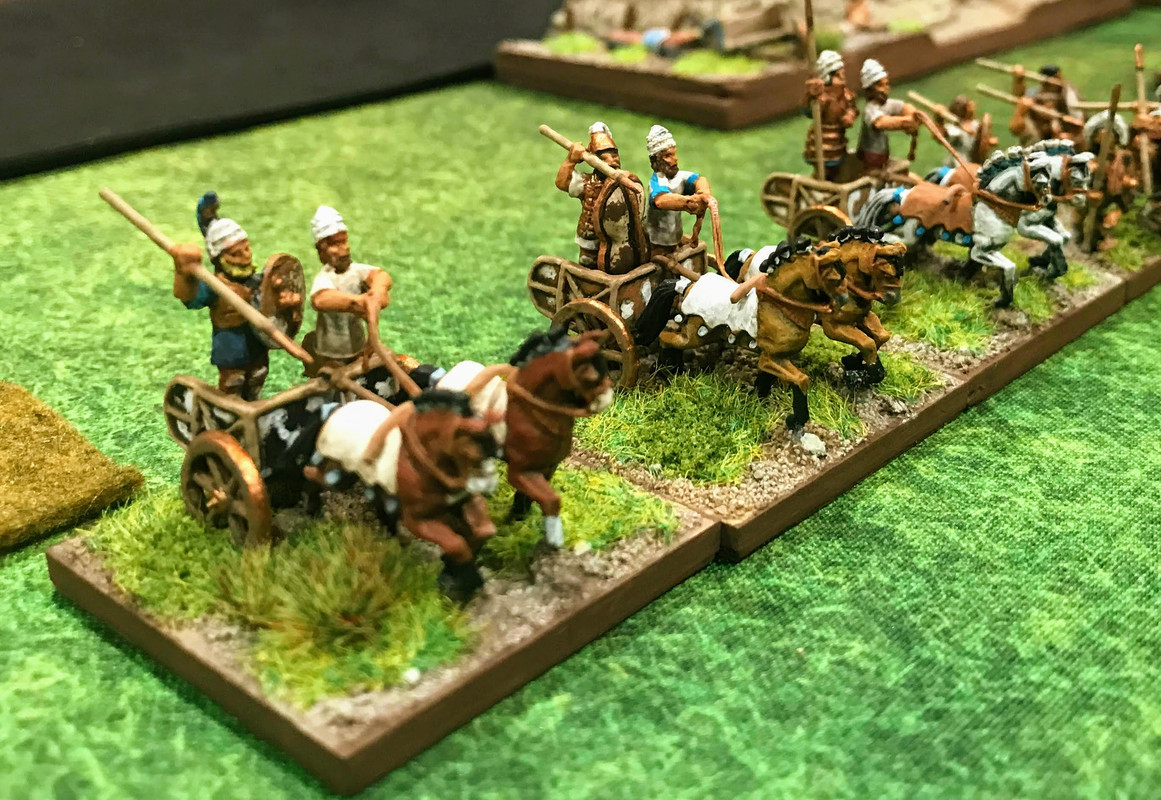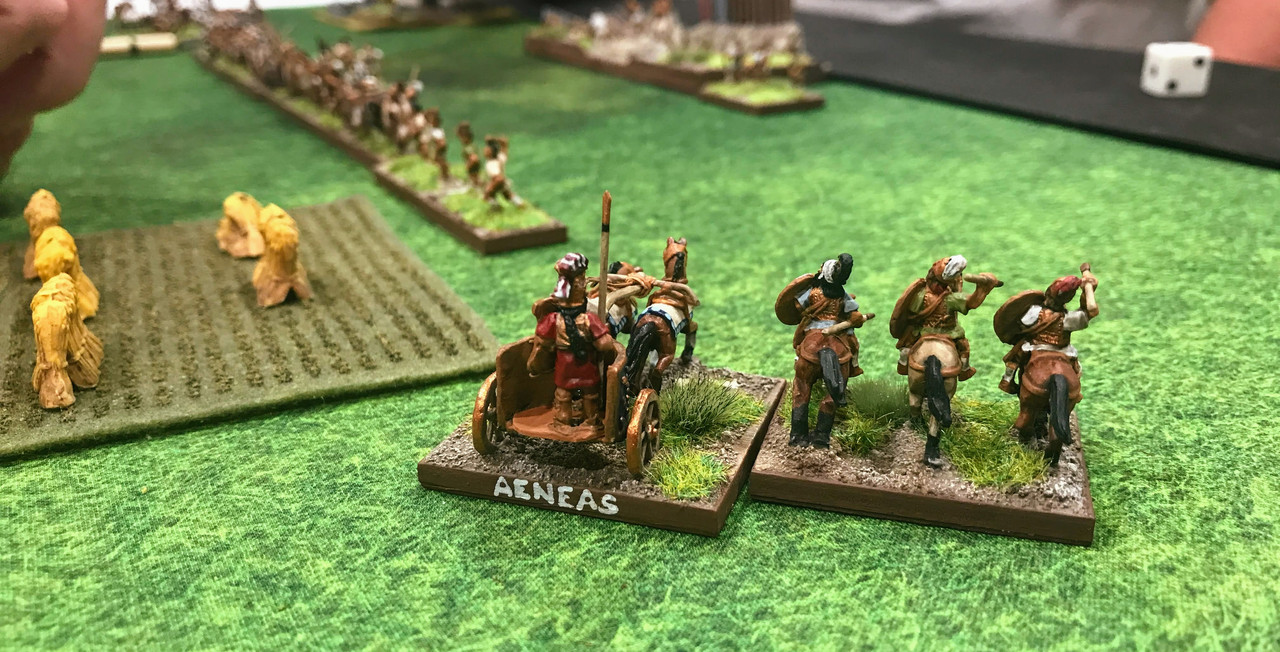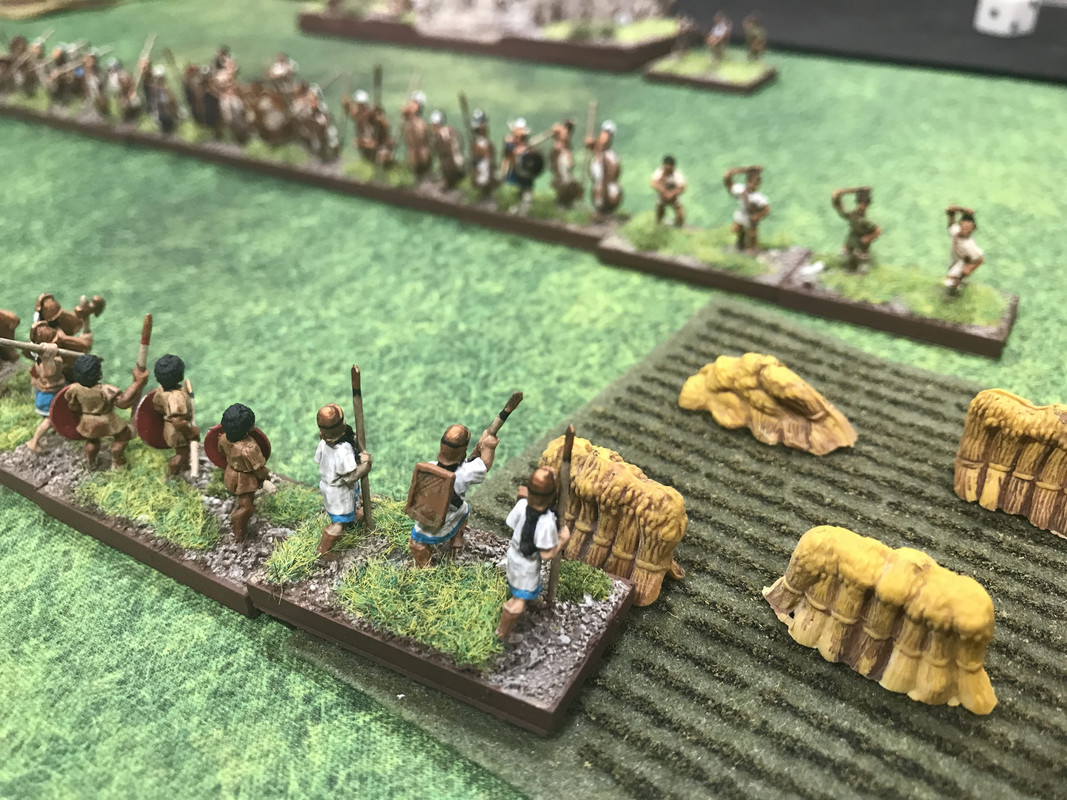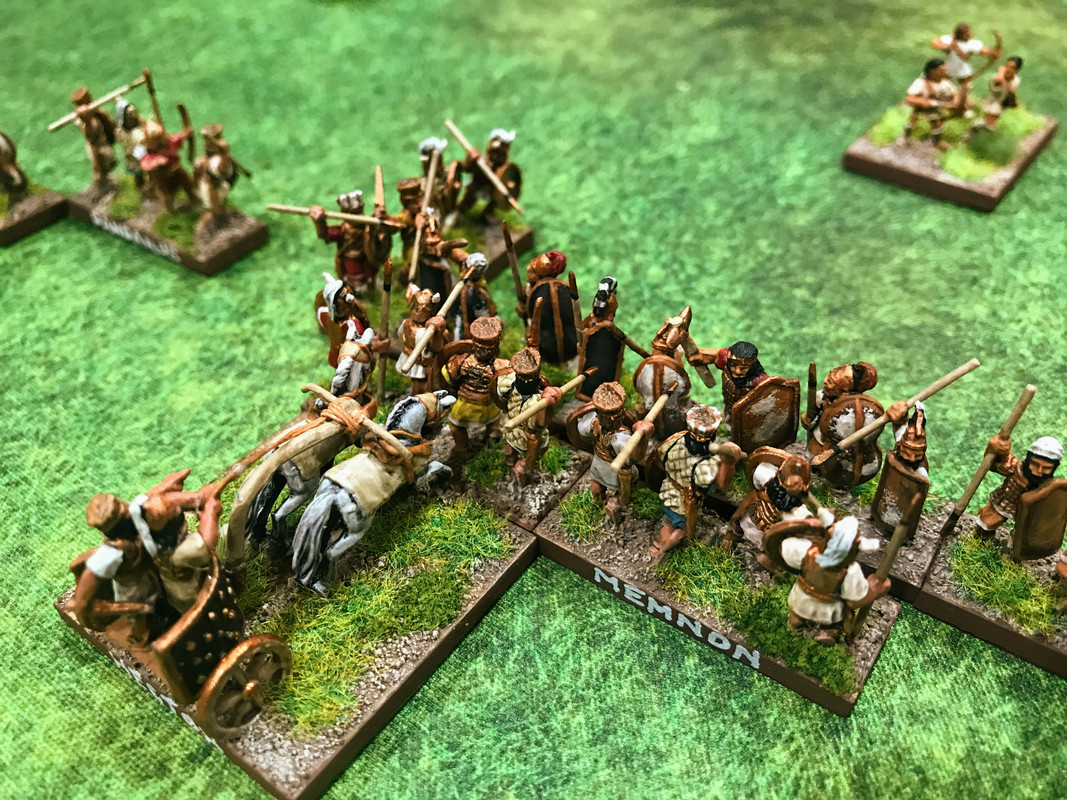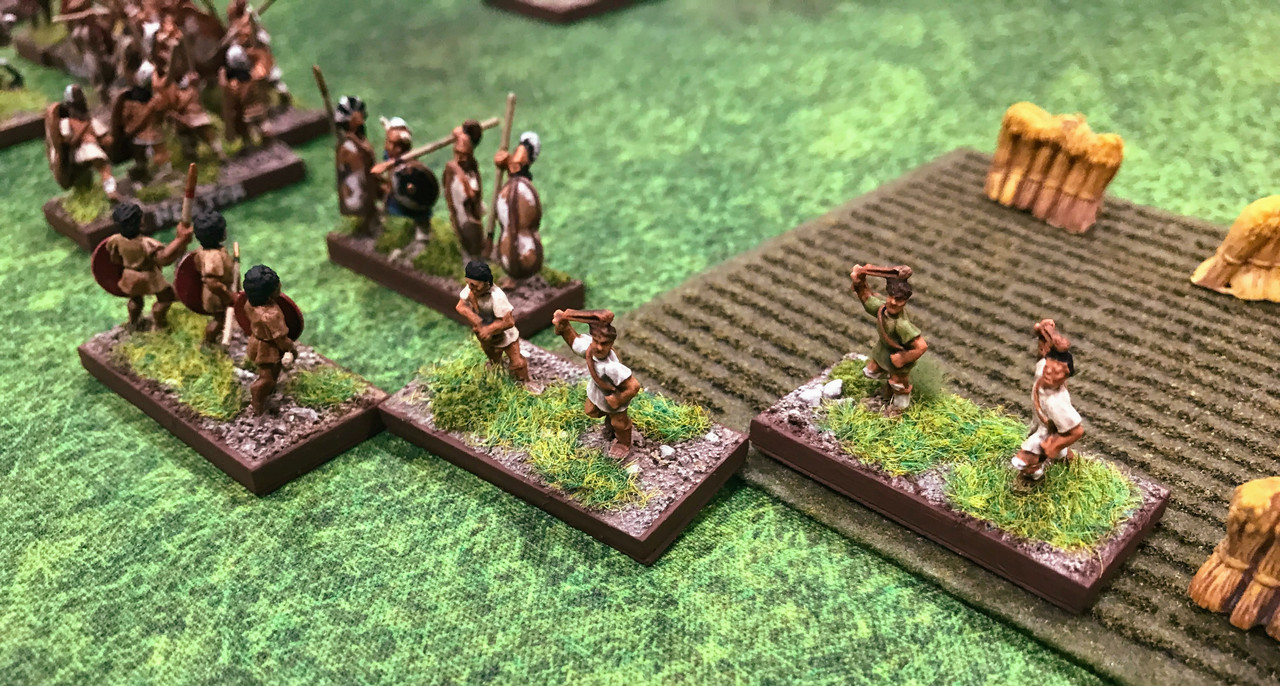Later Mycenaean vs. Trojans
Posted: Sat Apr 16, 2022 8:33 pm
My son, son-in-law, nephew and I played two battles of Triumph! on Friday using my new Later Mycenaean and Trojan armies. We used the standard two player game rules but had two players on each side cooperating on decision-making and troop movement.
The Forces.
The Later Mycenaean (Achaean) forces were Agamemnon, Menelaus, and Achilles on chariots (three Battle Taxis), six stands of heroes and their warrior followers (Heavy Foot), the Myrmidons (Elite Foot), and light troops (one Light Foot, two Skirmishers, and two Bow Levy). My son-in-law and nephew commanded this force.
The Trojan forces were Hector, Aeneas, and Paris on chariots (three Battle Taxis), four heroes on foot and their warriors (four Heavy Foot), Thracian Horsemen (one Bad Horse), Lukka Warriors (Raiders), light troops from Ethiope, Minos, and the Hittite empire (four Light Foot), two Bow Levy, and one Skirmisher. My son and I commanded the Trojans.
Before the Battle.
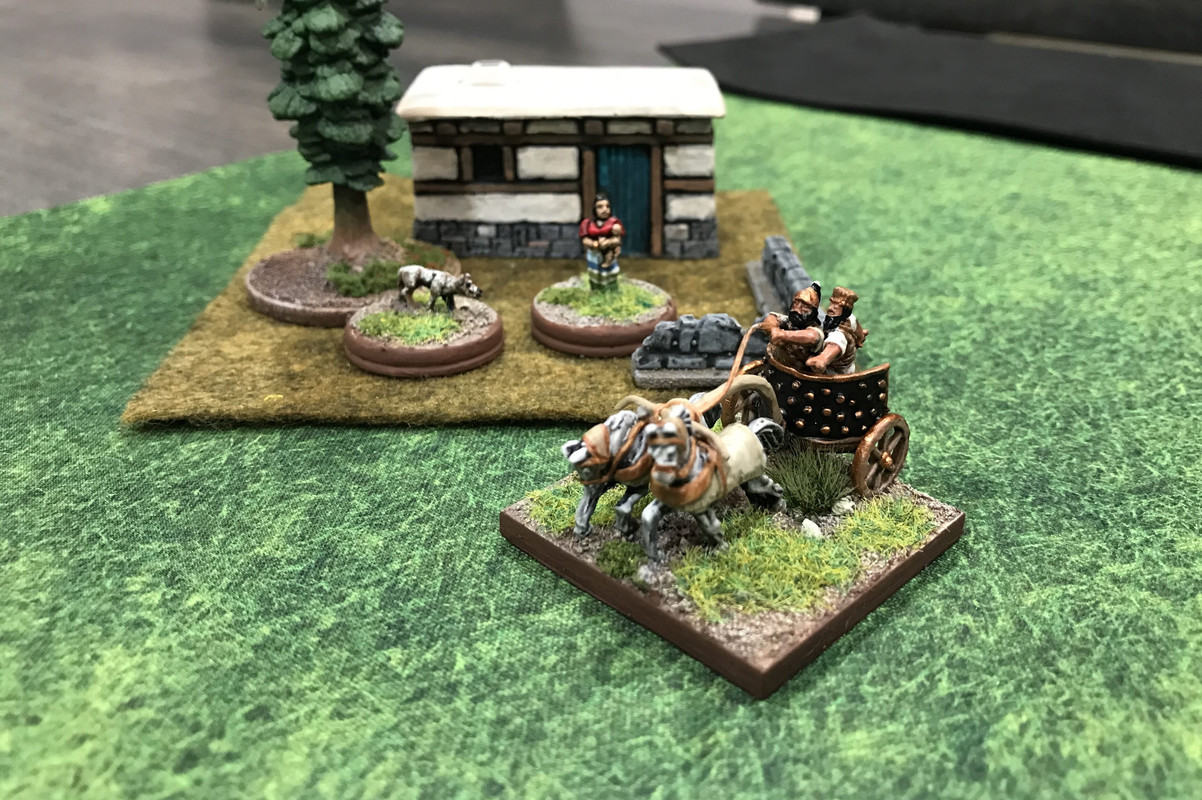
Andromache, holding infant Astyanax, bids farewell to Hector.
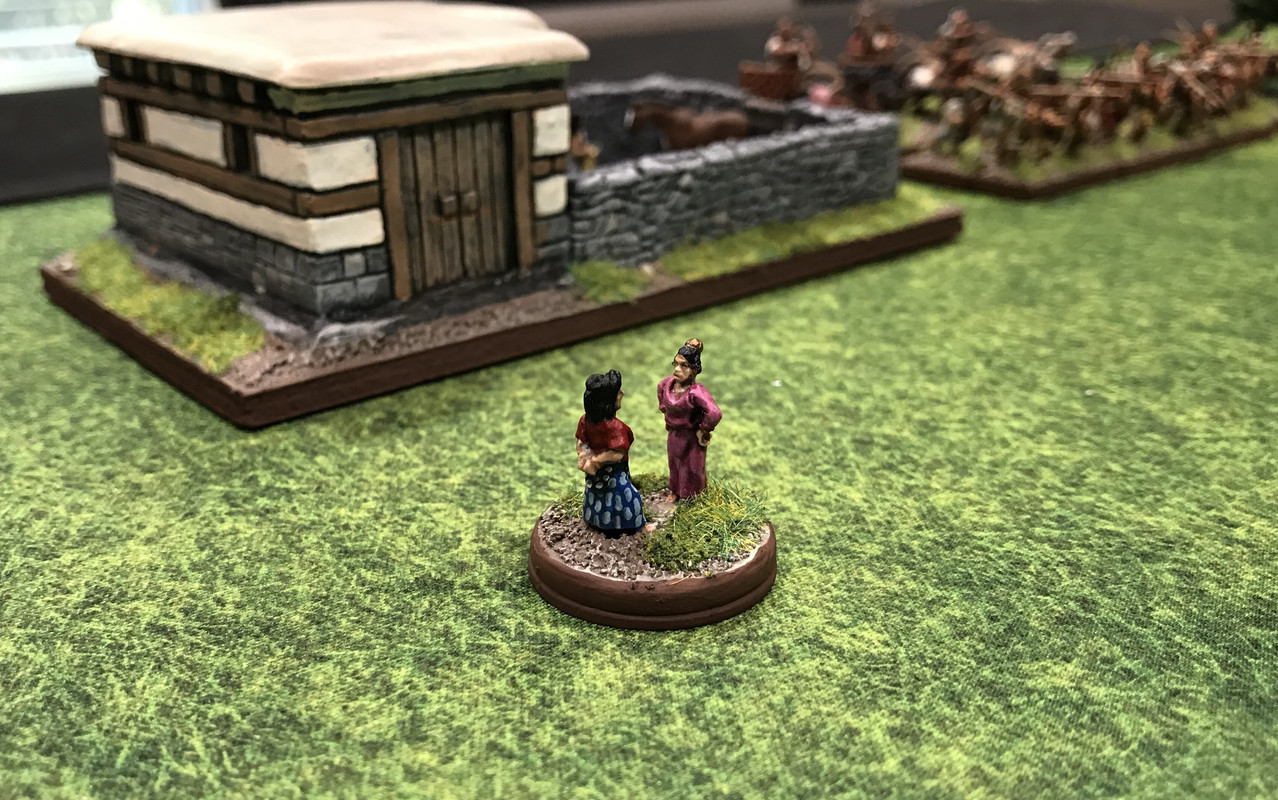
Cassandra tells her mother Queen Hecuba that there will be a battle soon but is not believed.
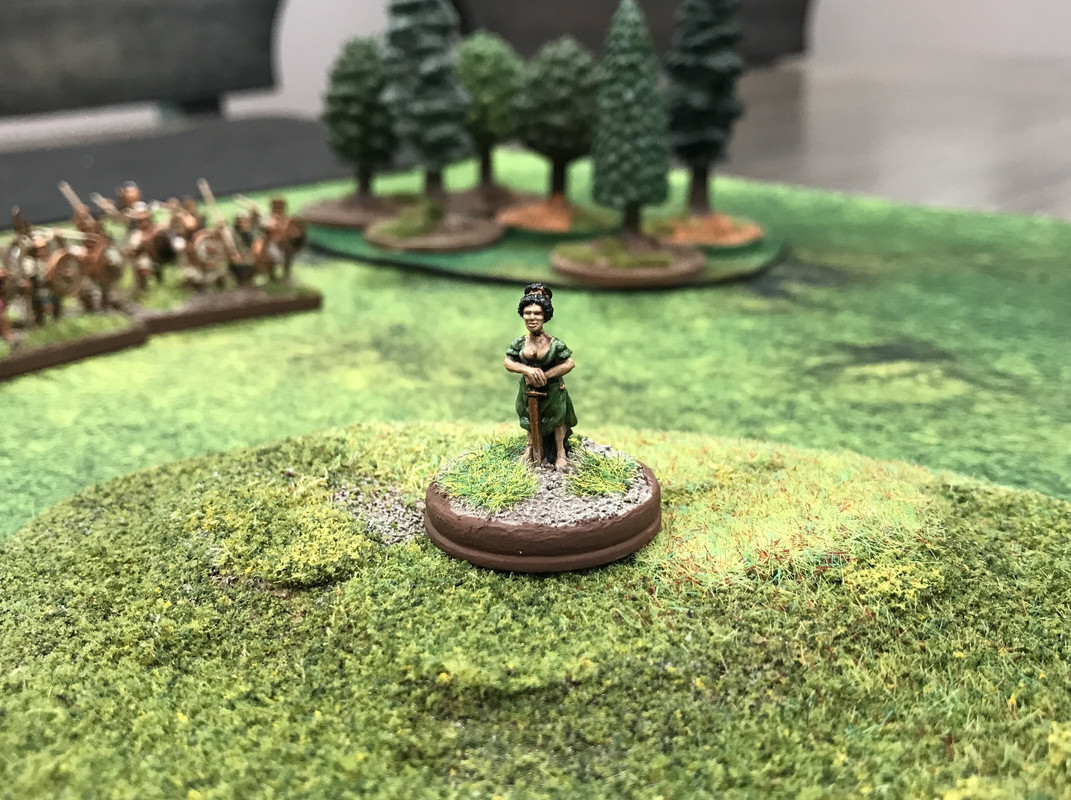
A tall woman with a sword waits for a chance to meddle in the upcoming battle.
The Battlefield and Deployment The terrain was Arable with two features: a village and a stream. Both were on the same edge of the battlefield.
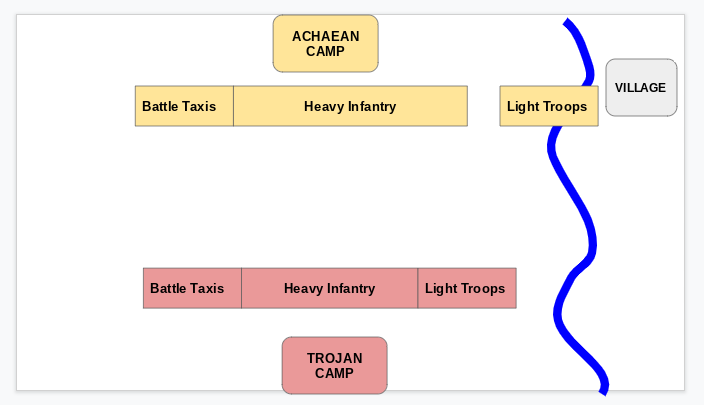
The Trojans had the option for a flank march, which would consist of four stands of Light Foot and the Bad Horse. The rest were set up in the center with the Battle Taxis on the Trojan left flank.
The Achaean forces set up with the Battle Taxis on their right flank and Heavy Foot in the center. The Elite Foot were on the Achaean left flank. The Light Foot and Skirmishers were set up on the banks of the stream.
Initial Plans.
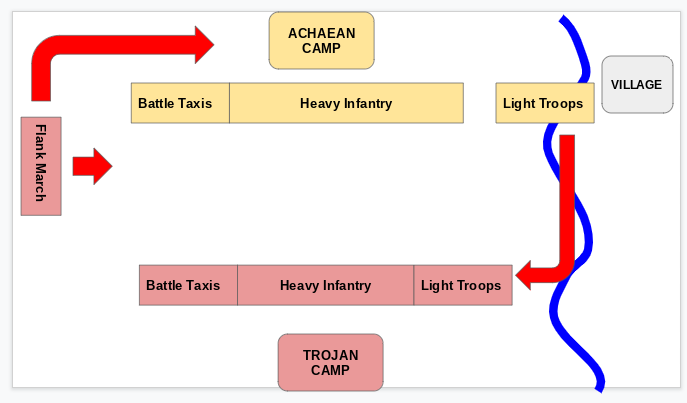
The Trojan plan was to raid the Achaean camp with the Bad Horse included in the flank march, while the light troops in the flank march and the Battle Taxis in the main line enveloped the Achaean right flank. The center would advance steadily.
The Achaean plan was to advance in the center and use their greater number of heavy infantry to win in the center while advancing the light troops down the line of the stream to attack the Trojan right flank.
The Battle.

Achaean light troops advance along the stream past a Trojan farm.
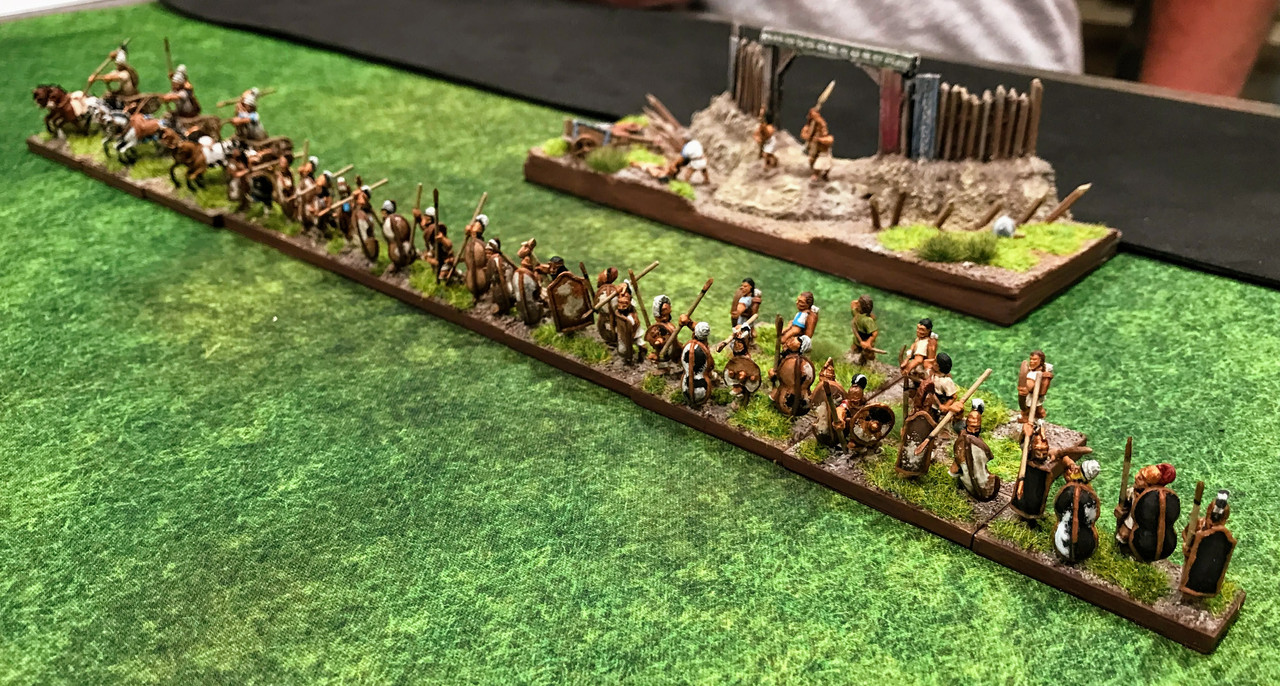
Achaean heavy infantry and chariots assemble in front to their hastily-constructed camp.

A view from behind the Achaean lines showing the Trojan main force in the distance.
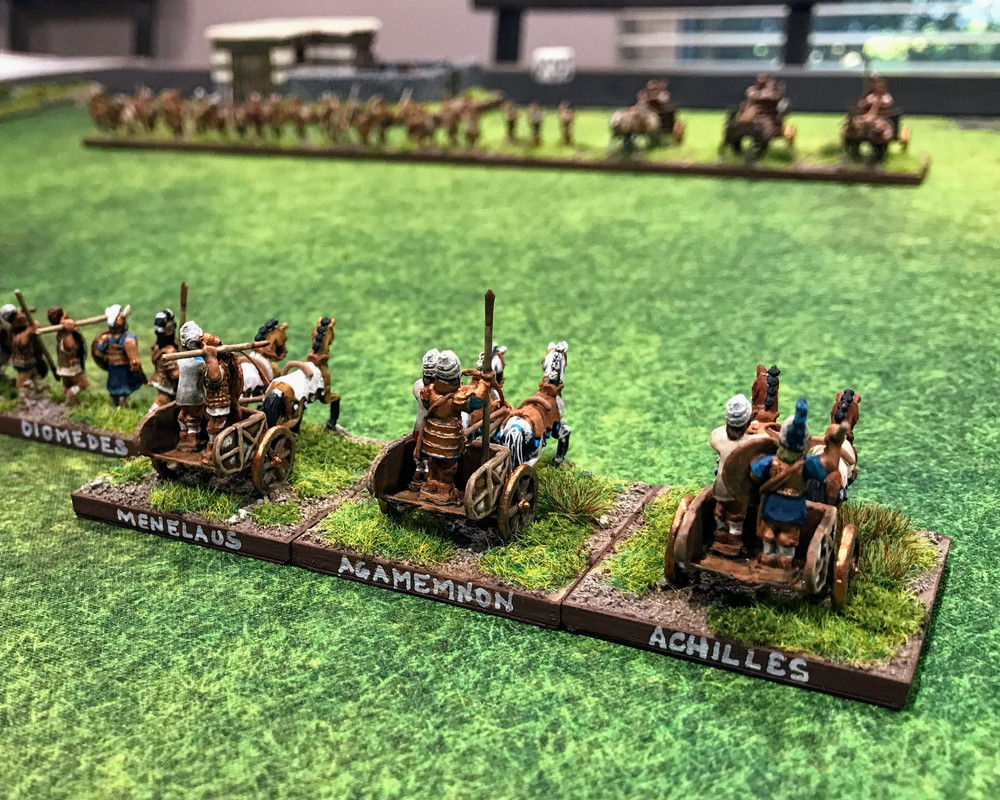
Agamemnon, Menelaus, and Achilles see the Trojan heroes coming to confront them on the open plain.
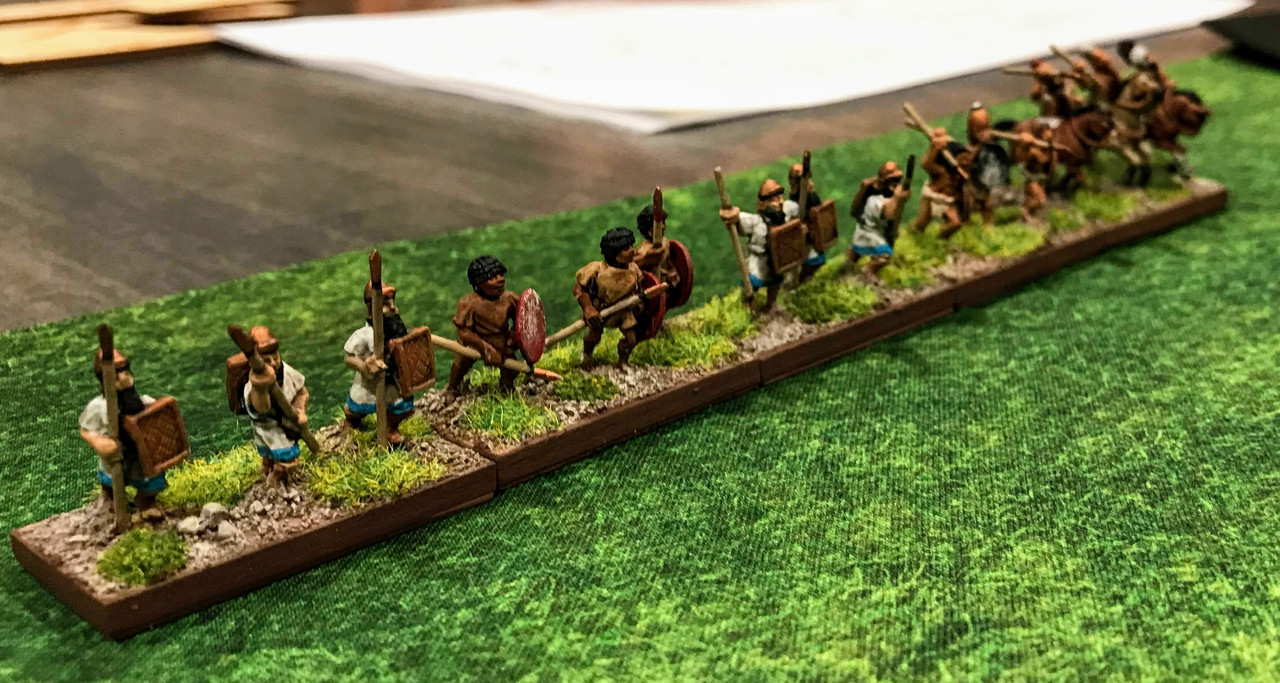
The Trojan flank march arrives.
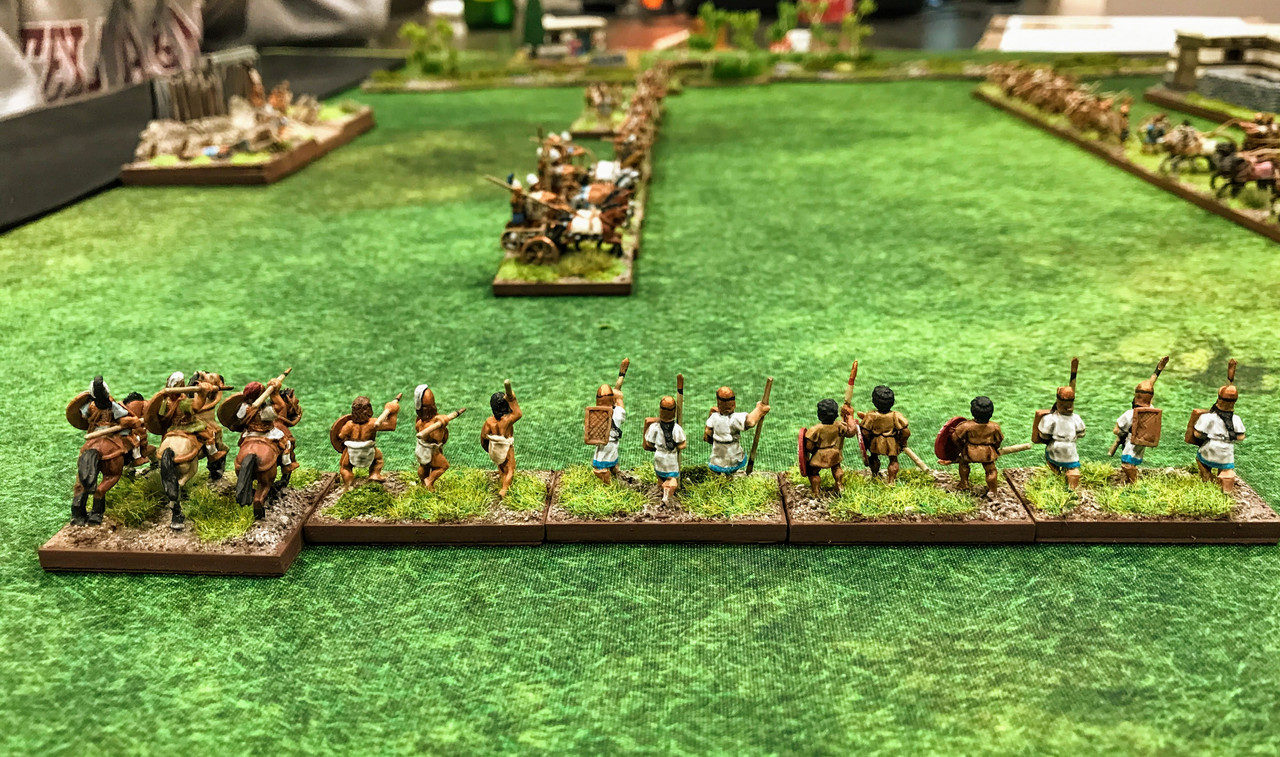
Troops from Thrace, Minos, Ethiopia, and the Hittite Empire.
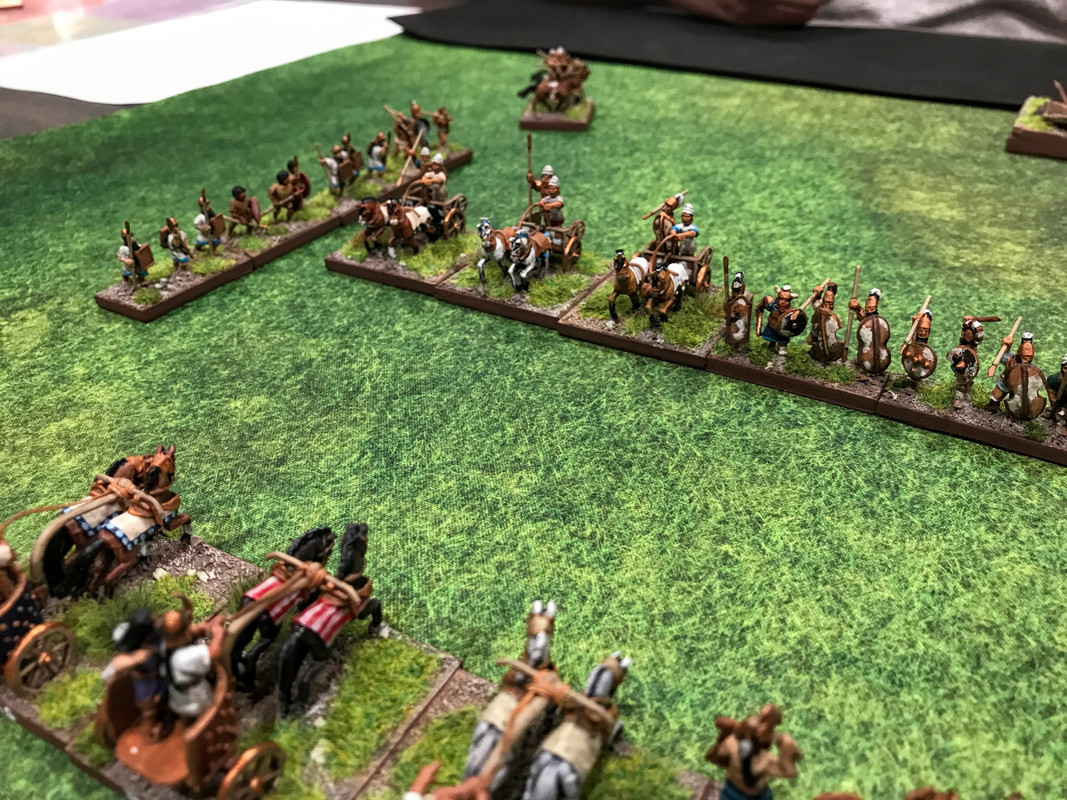
The flank march aggressively threatens the Achaean right flank.
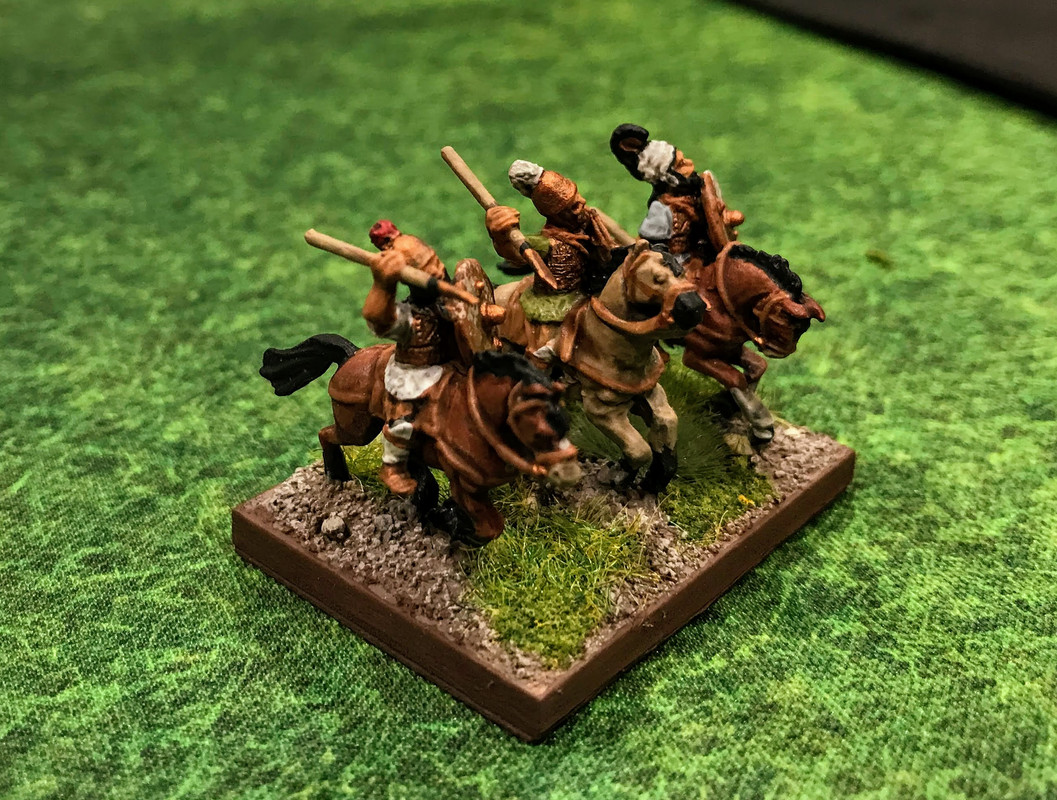
Thracian horsemen advance on the enemy camp.
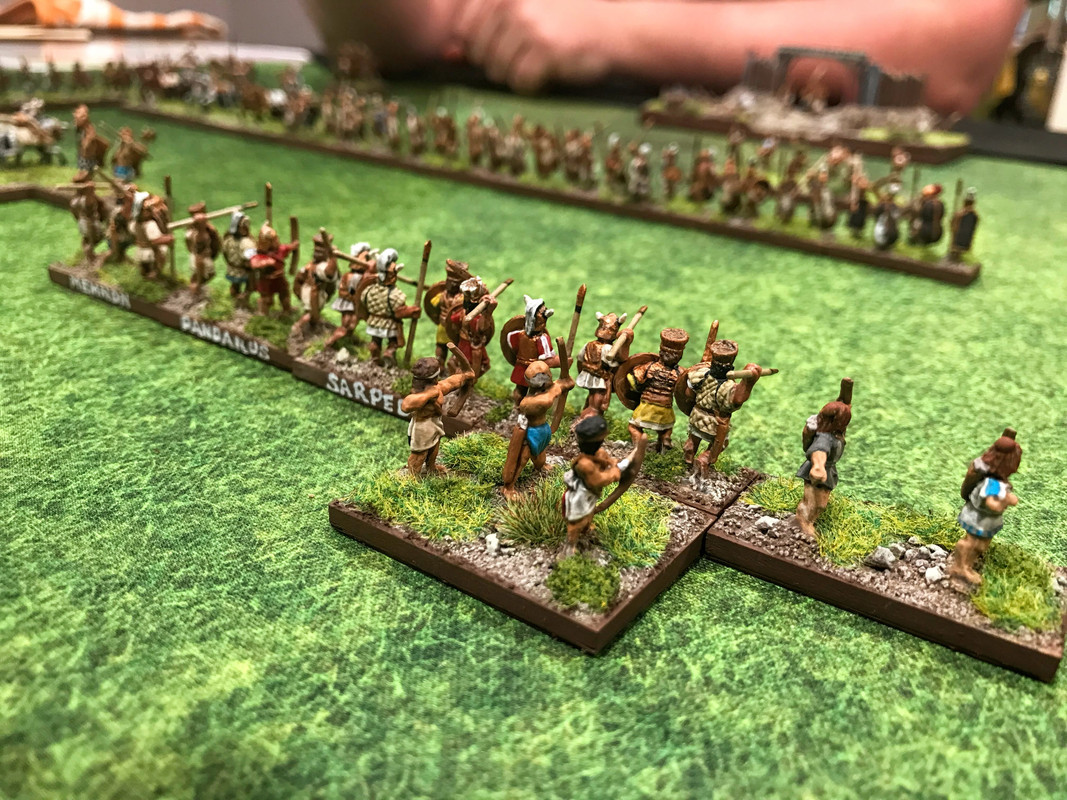
The Trojan heavy infantry are supported by Thracian skirmishers and some levied locals with bows.
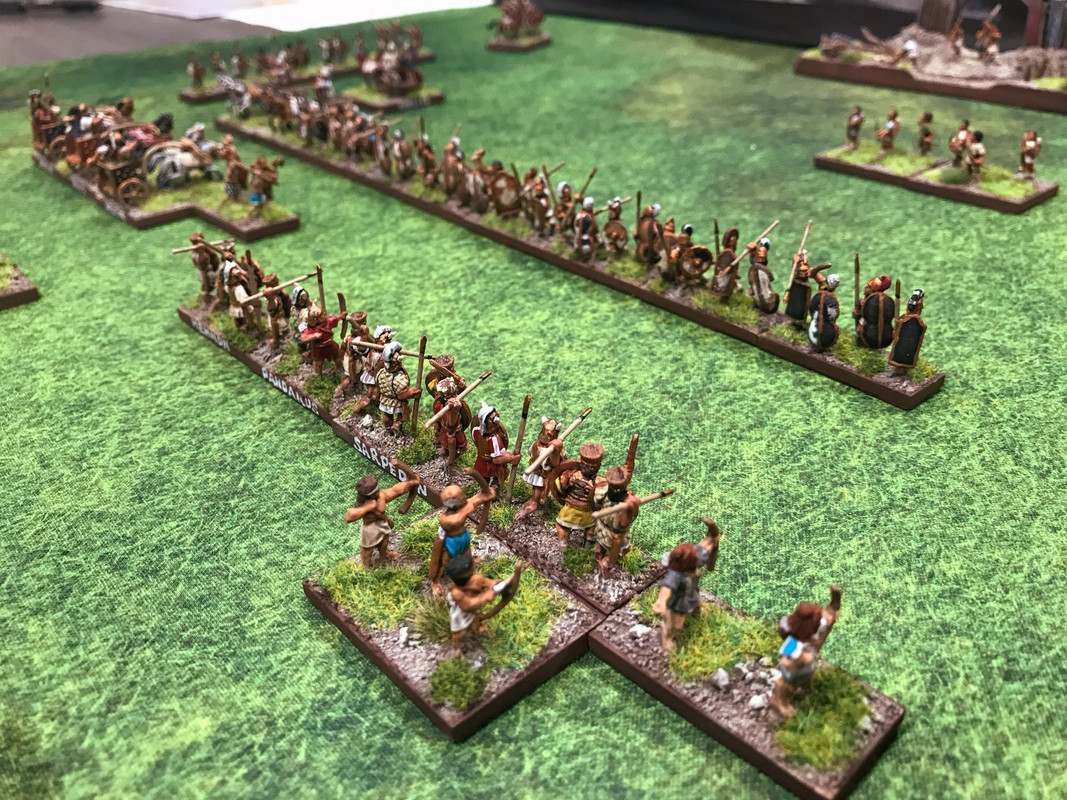
The Achaeans abandon their slow-moving bow levy in order to press the attack.
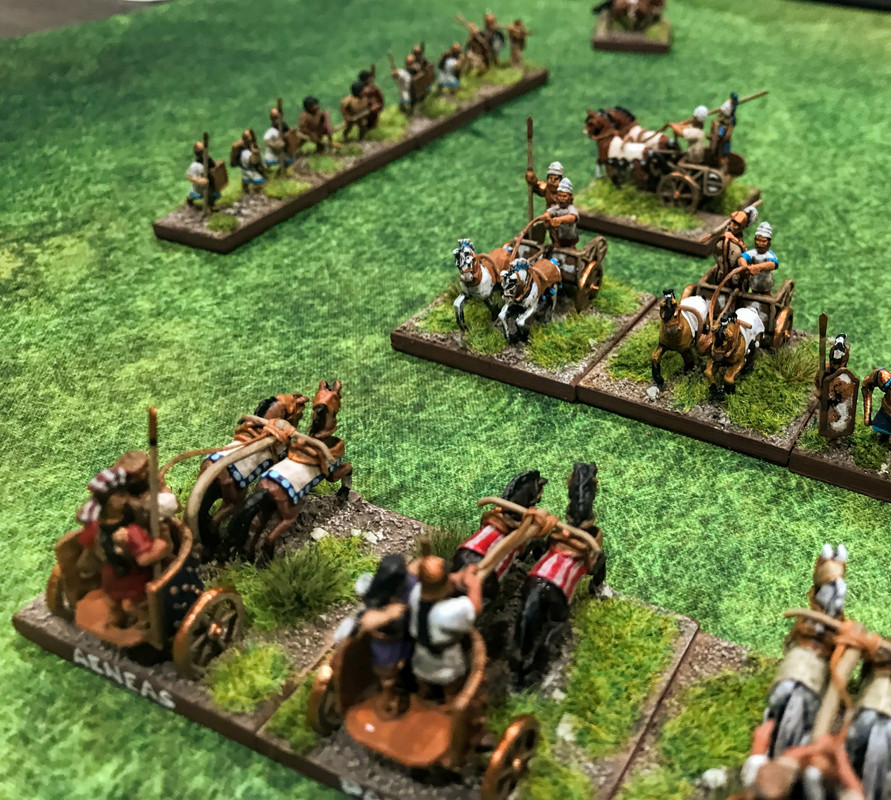
Achilles turns to face the flank march alone, so that the rest of the main effort can advance.

The Trojan light infantry hesitate when faced with mighty Achilles.
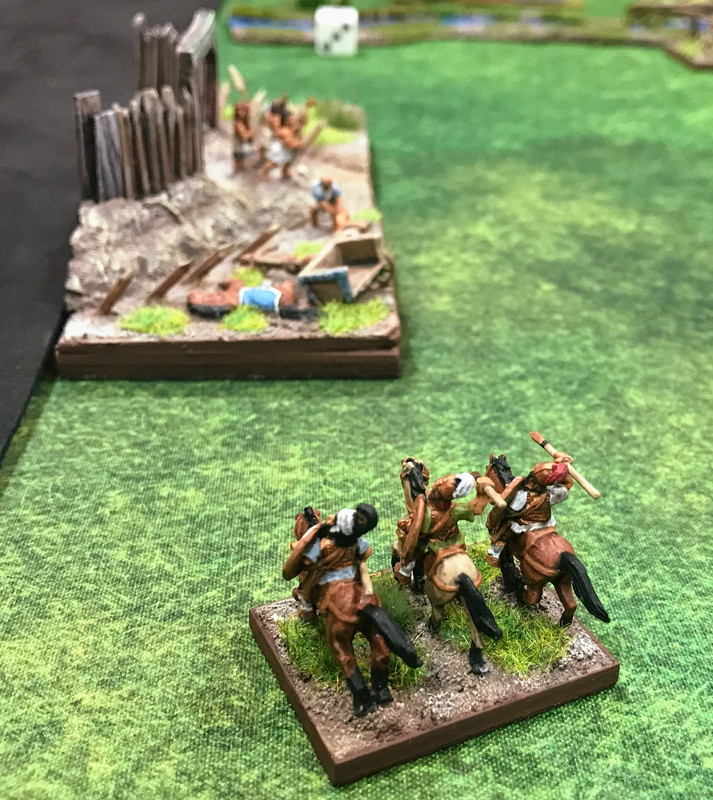
The Thracians close in on the camp.
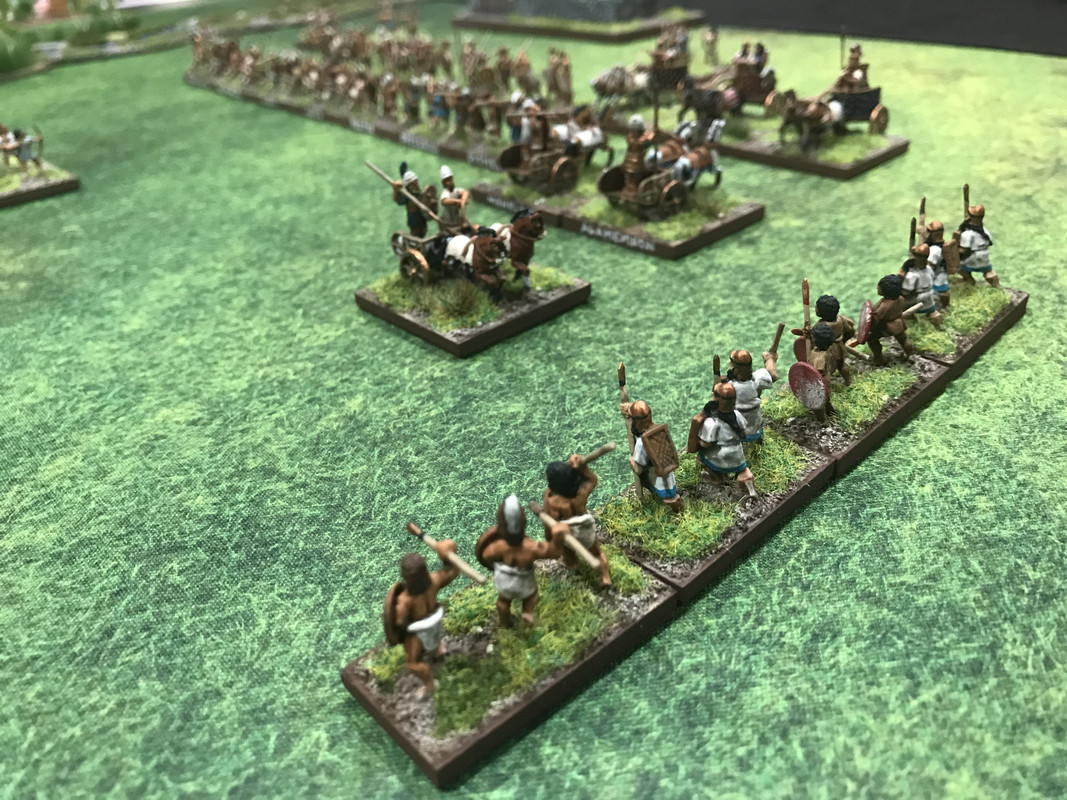
Is there no one who will challenge Achilles?
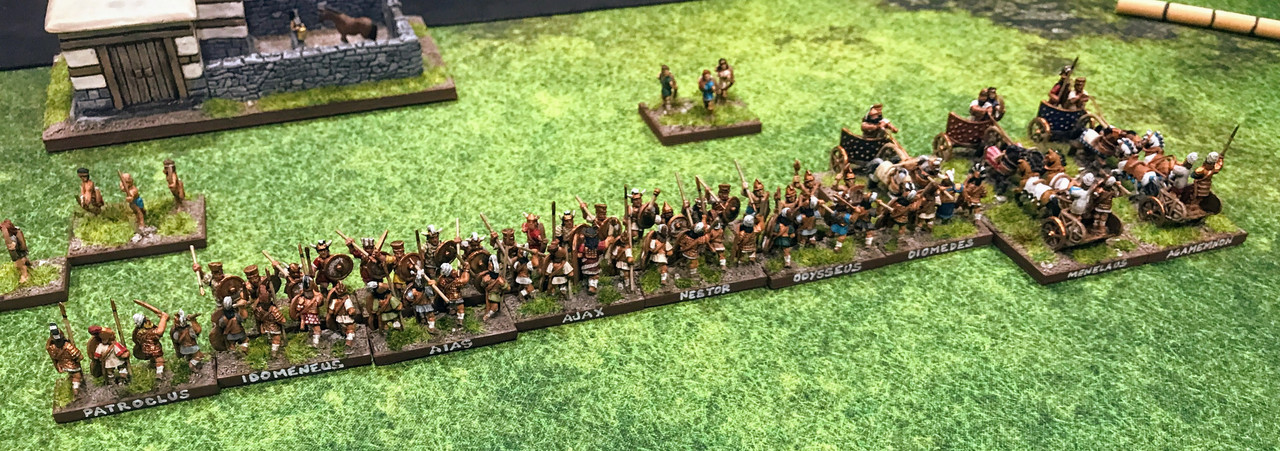
The battle lines make contact.

Every hero on both sides is engaged, save Achilles.
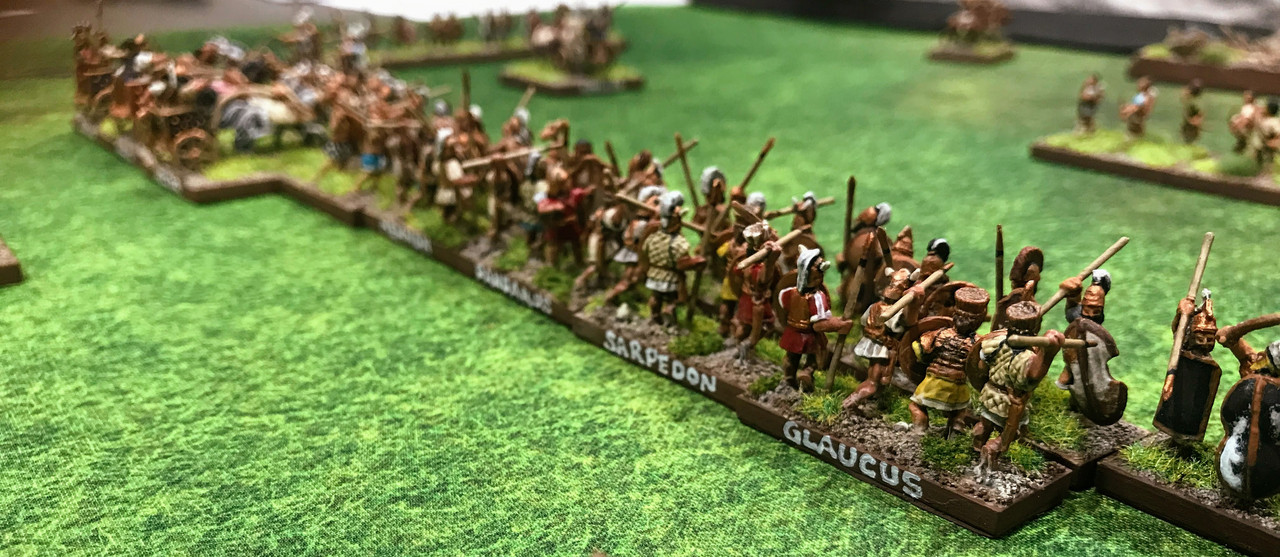
Glaucus is hard pressed by Idomeneus, who is aided by Patroclus and the Myrmidons on his left flank.

Paris and Aeneas face the brothers Agamemnon and Menelaus.

Paris slays Menelaus and advances into the gap.
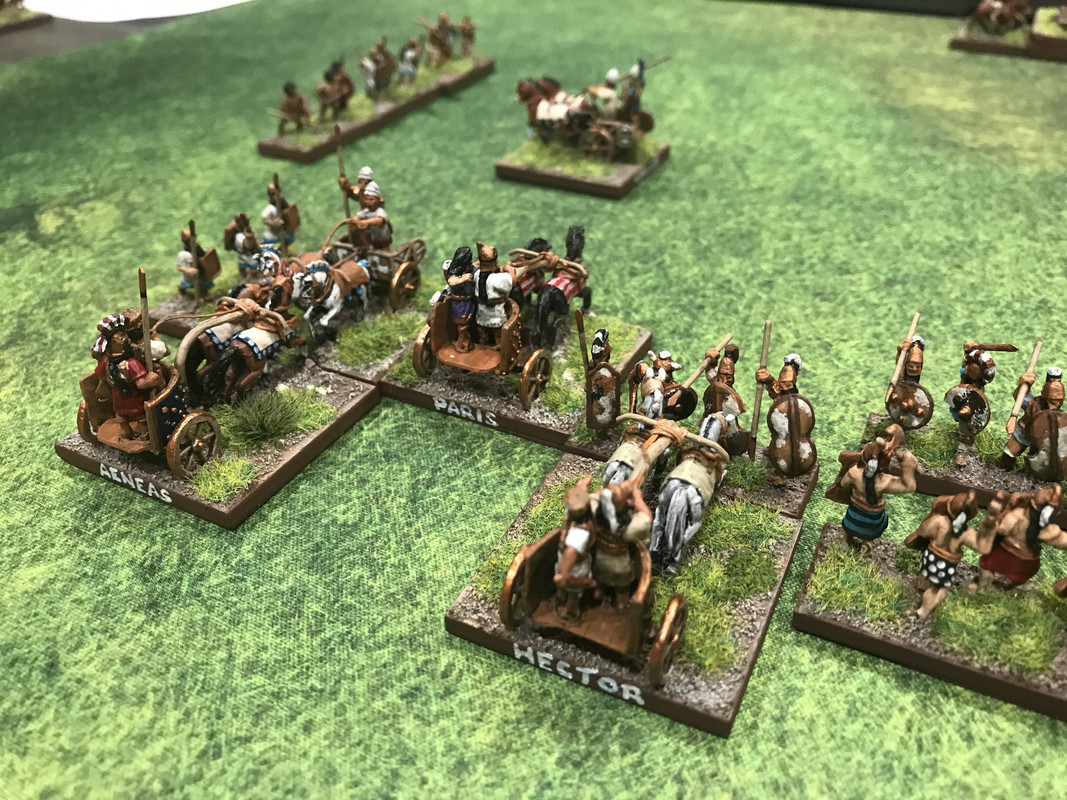
Some Hittite troops from the flank march advance to help Aeneas as he battles Agamemnon. The Trojans sense the battle is turning in their favor.
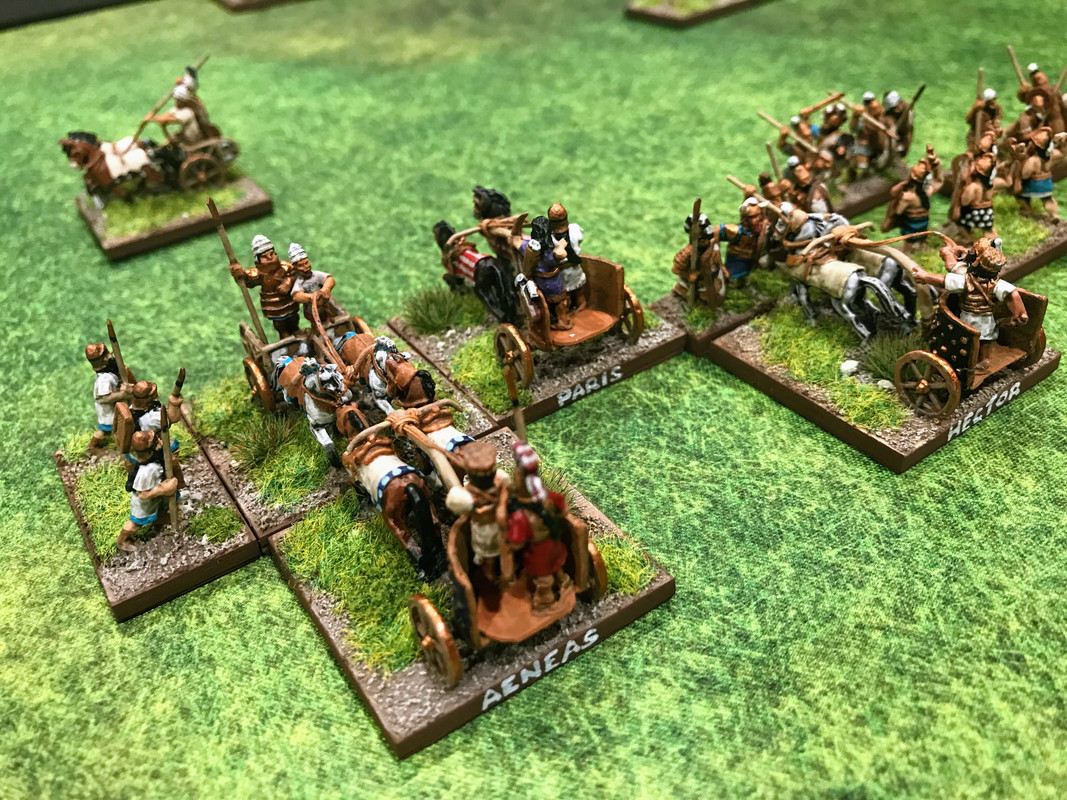
Achilles ignores the plight of Agammemnon.

The battle lines of exhausted heavy infantry back away for a short time.
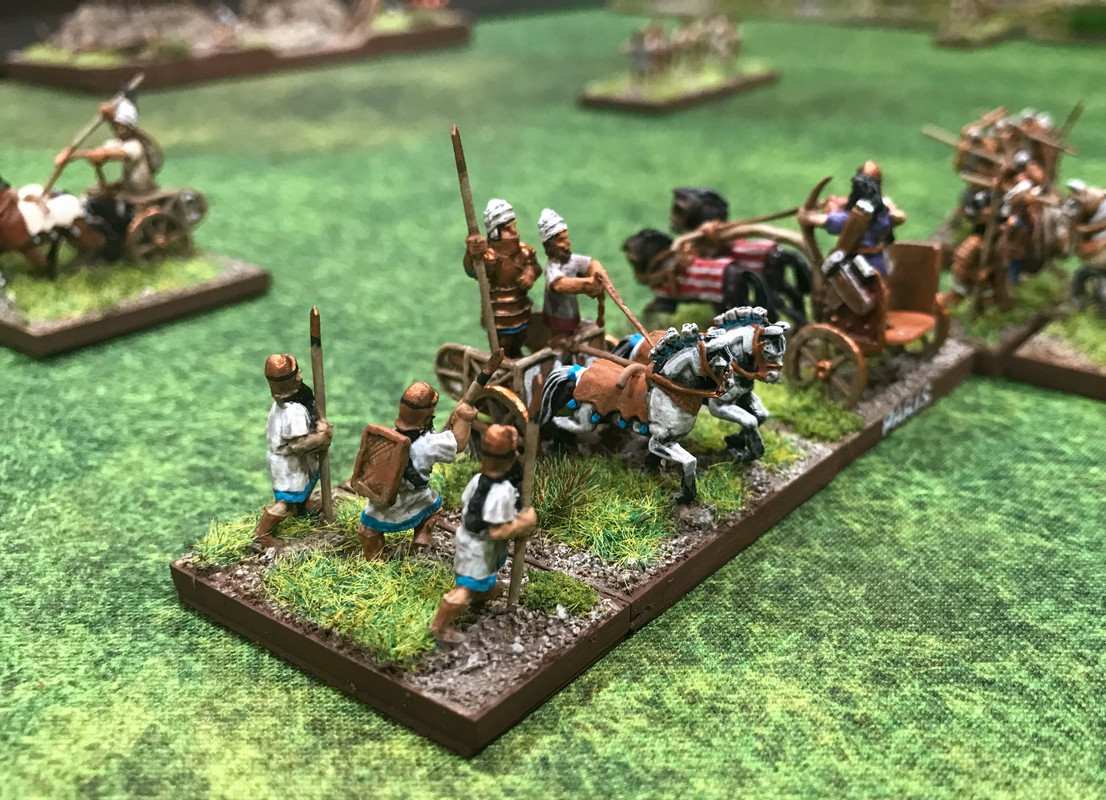
Aeneas is slain by Agamemmnon's spear.

Achilles turns and joins the battle in earnest, running down the Hittite infantry.
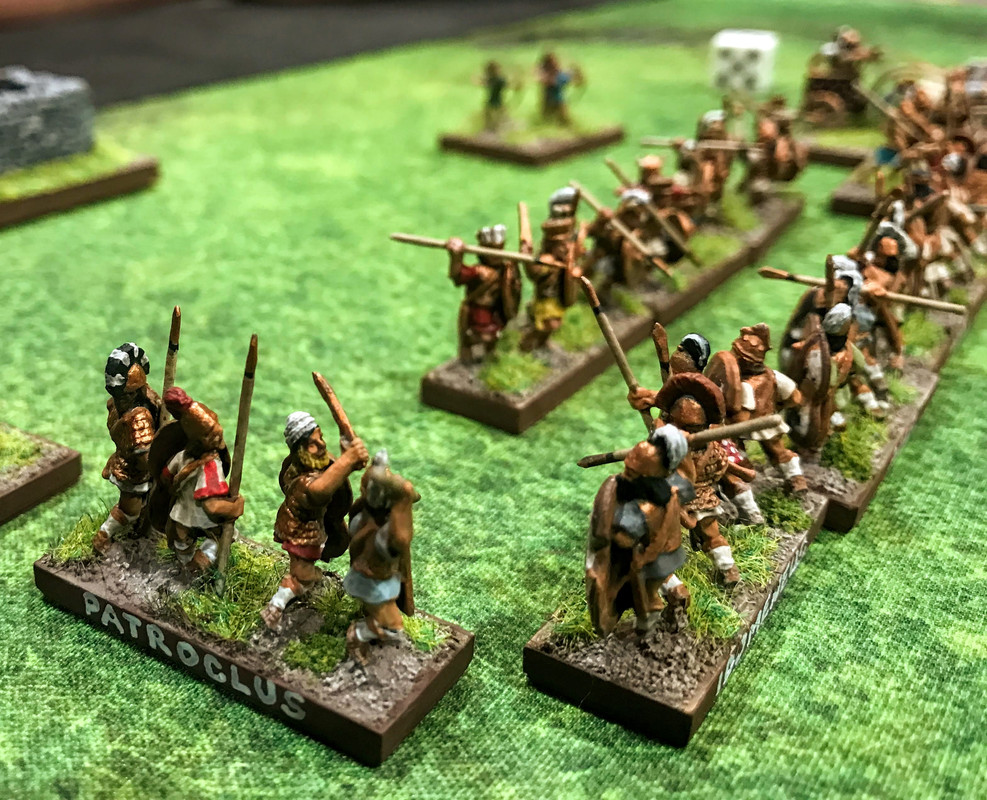
On the Trojan right flank, Glaucus is overwhelmed by Idomeneus and Patroclus.

Odysseus defeats the Lukka warriors.
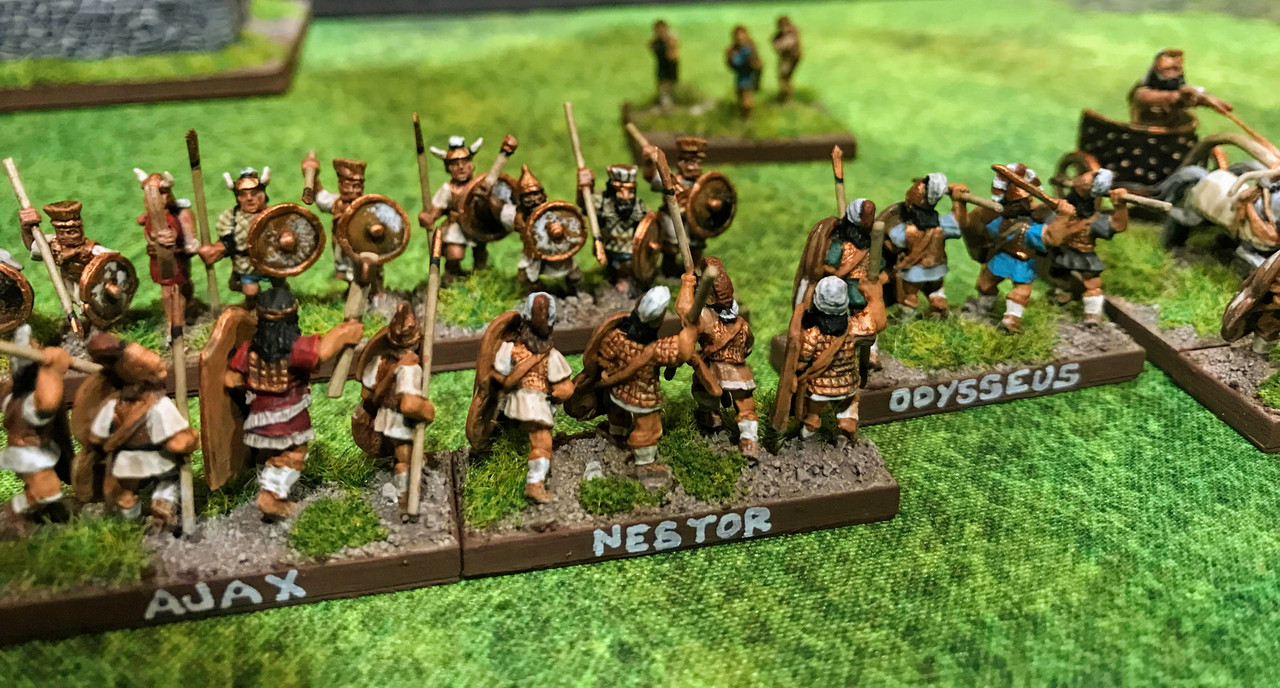
Odysseus advances into the gap left by the Lukka.

The Trojan horsemen try several times to take the Achaean camp but are repulsed each time.
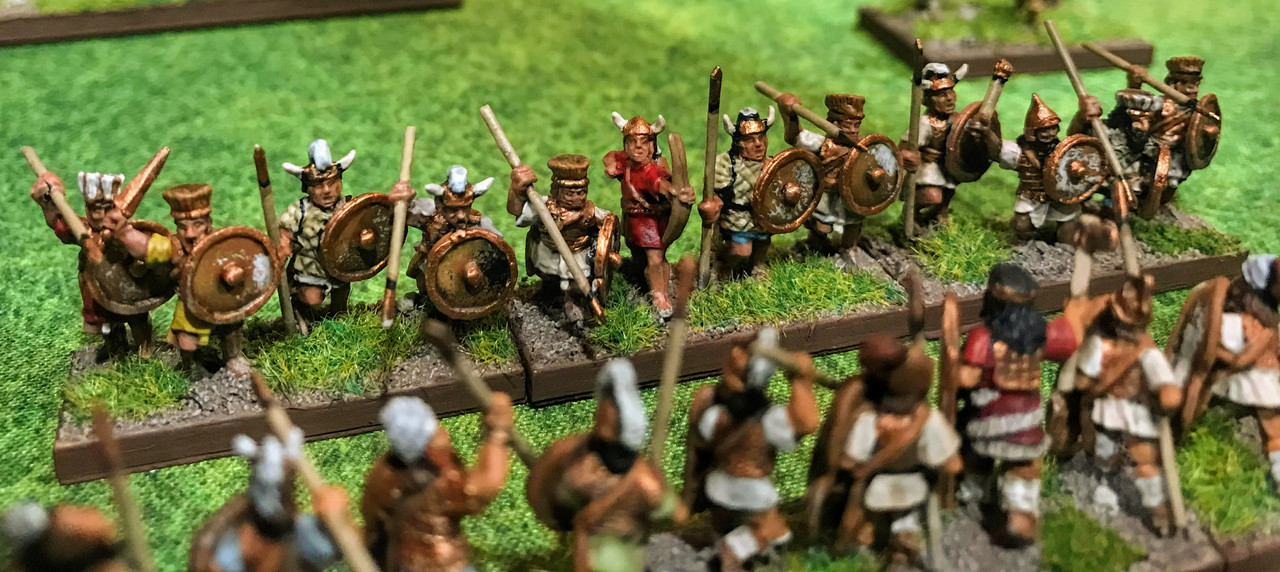
The remaining Trojan heavy infantry back away and prepare to flee the field. The battle is over.
Conclusion.
The Achaean light infantry were quickly out of command radius and never advanced past the stream and played no part in the battle. The bow levy on both sides were left behind the lines. The Trojan flank march was effective in drawing away one Battle Taxi and aided in the attempt on the Achaean general, but most of the stands did not move much after entering the battle. The battle was strictly decided by the infantry and chariot struggle in the center.
We had a great time with this game. It took us about an hour and a half from start to finish, which is especially good considering that my nephew was new to this system.
The Forces.
The Later Mycenaean (Achaean) forces were Agamemnon, Menelaus, and Achilles on chariots (three Battle Taxis), six stands of heroes and their warrior followers (Heavy Foot), the Myrmidons (Elite Foot), and light troops (one Light Foot, two Skirmishers, and two Bow Levy). My son-in-law and nephew commanded this force.
The Trojan forces were Hector, Aeneas, and Paris on chariots (three Battle Taxis), four heroes on foot and their warriors (four Heavy Foot), Thracian Horsemen (one Bad Horse), Lukka Warriors (Raiders), light troops from Ethiope, Minos, and the Hittite empire (four Light Foot), two Bow Levy, and one Skirmisher. My son and I commanded the Trojans.
Before the Battle.

Andromache, holding infant Astyanax, bids farewell to Hector.

Cassandra tells her mother Queen Hecuba that there will be a battle soon but is not believed.

A tall woman with a sword waits for a chance to meddle in the upcoming battle.
The Battlefield and Deployment The terrain was Arable with two features: a village and a stream. Both were on the same edge of the battlefield.

The Trojans had the option for a flank march, which would consist of four stands of Light Foot and the Bad Horse. The rest were set up in the center with the Battle Taxis on the Trojan left flank.
The Achaean forces set up with the Battle Taxis on their right flank and Heavy Foot in the center. The Elite Foot were on the Achaean left flank. The Light Foot and Skirmishers were set up on the banks of the stream.
Initial Plans.

The Trojan plan was to raid the Achaean camp with the Bad Horse included in the flank march, while the light troops in the flank march and the Battle Taxis in the main line enveloped the Achaean right flank. The center would advance steadily.
The Achaean plan was to advance in the center and use their greater number of heavy infantry to win in the center while advancing the light troops down the line of the stream to attack the Trojan right flank.
The Battle.

Achaean light troops advance along the stream past a Trojan farm.

Achaean heavy infantry and chariots assemble in front to their hastily-constructed camp.

A view from behind the Achaean lines showing the Trojan main force in the distance.

Agamemnon, Menelaus, and Achilles see the Trojan heroes coming to confront them on the open plain.

The Trojan flank march arrives.

Troops from Thrace, Minos, Ethiopia, and the Hittite Empire.

The flank march aggressively threatens the Achaean right flank.

Thracian horsemen advance on the enemy camp.

The Trojan heavy infantry are supported by Thracian skirmishers and some levied locals with bows.

The Achaeans abandon their slow-moving bow levy in order to press the attack.

Achilles turns to face the flank march alone, so that the rest of the main effort can advance.

The Trojan light infantry hesitate when faced with mighty Achilles.

The Thracians close in on the camp.

Is there no one who will challenge Achilles?

The battle lines make contact.

Every hero on both sides is engaged, save Achilles.

Glaucus is hard pressed by Idomeneus, who is aided by Patroclus and the Myrmidons on his left flank.

Paris and Aeneas face the brothers Agamemnon and Menelaus.

Paris slays Menelaus and advances into the gap.

Some Hittite troops from the flank march advance to help Aeneas as he battles Agamemnon. The Trojans sense the battle is turning in their favor.

Achilles ignores the plight of Agammemnon.

The battle lines of exhausted heavy infantry back away for a short time.

Aeneas is slain by Agamemmnon's spear.

Achilles turns and joins the battle in earnest, running down the Hittite infantry.

On the Trojan right flank, Glaucus is overwhelmed by Idomeneus and Patroclus.

Odysseus defeats the Lukka warriors.

Odysseus advances into the gap left by the Lukka.

The Trojan horsemen try several times to take the Achaean camp but are repulsed each time.

The remaining Trojan heavy infantry back away and prepare to flee the field. The battle is over.
Conclusion.
The Achaean light infantry were quickly out of command radius and never advanced past the stream and played no part in the battle. The bow levy on both sides were left behind the lines. The Trojan flank march was effective in drawing away one Battle Taxi and aided in the attempt on the Achaean general, but most of the stands did not move much after entering the battle. The battle was strictly decided by the infantry and chariot struggle in the center.
We had a great time with this game. It took us about an hour and a half from start to finish, which is especially good considering that my nephew was new to this system.



